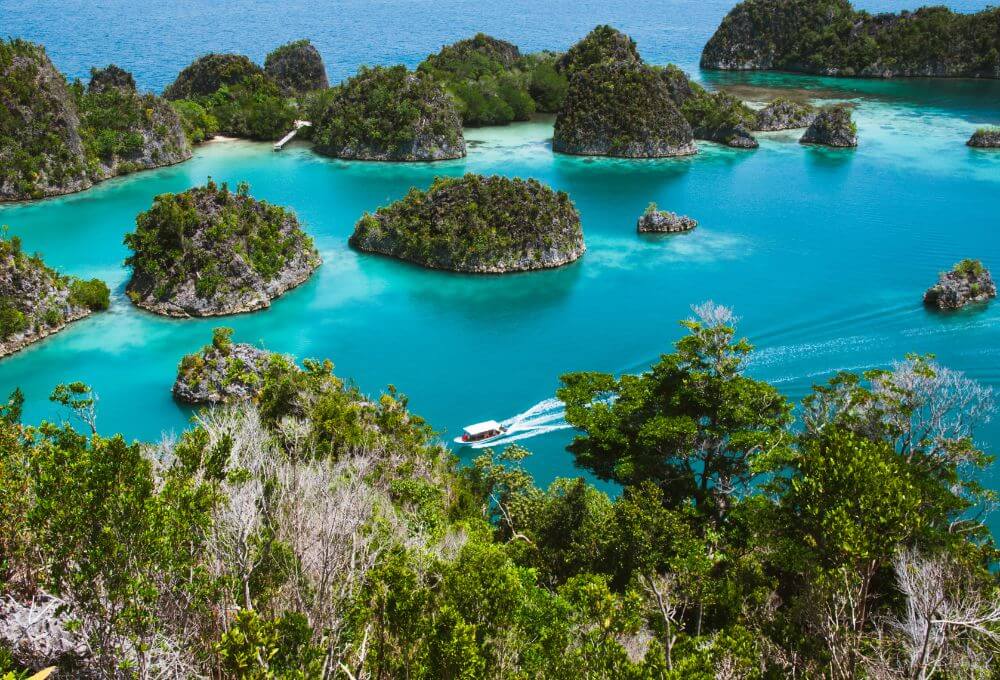Indonesia is an archipelago of over 17,000 islands, but beyond the well-known Bali and Java lie countless hidden gems waiting to be explored. These lesser-known islands boast untouched beaches, rich cultural heritage, and stunning landscapes that rival the world’s most sought-after destinations. In this guide, we’ll take you through some of Indonesia’s hidden islands, uncovering their history, cultural significance, architectural highlights, and the unique traditions that make them truly special.
1. Kei Islands – The Last Paradise

History & Origins
The Kei Islands, located in the Maluku province, have a rich history dating back to the era of spice trade routes. These islands were once a crucial part of the Portuguese and Dutch trading networks. European explorers first arrived in the 16th century, seeking cloves, nutmeg, and other precious spices. Over time, the islands blended indigenous traditions with colonial influences, creating a unique cultural tapestry.
Cultural Significance
The Kei Islands are home to the indigenous Kei people, who maintain deep spiritual connections to the sea. The ‘Larvul Ngabal’ customary law governs the social structure and way of life, emphasizing respect for nature and communal harmony. Festivals such as ‘Hawan-Wanan’ celebrate fishing traditions and involve vibrant boat parades and folk music.
Architectural Highlights
While Kei’s architecture leans towards traditional stilt houses, remnants of colonial-era structures remain, particularly in Langgur. The Catholic Church of Langgur, built during the Dutch era, is a significant historical landmark.
Historical Events & Festivals
- Hawan-Wanan Festival (April) – Celebrates the fishing season with traditional boat races.
- Kei Cultural Festival (October) – Showcases traditional dances, music, and rituals.
2. Wakatobi – A Diver’s Dream

History & Origins
Named after its four main islands (Wangi-Wangi, Kaledupa, Tomia, and Binongko), Wakatobi has been a hub for seafarers for centuries. The Bajo people, also known as ‘Sea Gypsies,’ have lived here for generations, crafting a unique maritime lifestyle.
Cultural Significance
The Bajo people live in floating villages, showcasing their unique boat-building techniques and deep-sea fishing skills. The ‘Sajo Moane’ dance is a cultural highlight, performed during village celebrations and weddings.
Architectural Highlights
Wakatobi’s architecture features wooden stilt houses built over the water. Binongko Island is known for its ancient iron-forging tradition, producing handcrafted blades and tools still used today.
Historical Events & Festivals
- Wakatobi Wave Festival (November) – A festival celebrating Bajo culture with boat races, dances, and culinary exhibitions.
- Tomia Cultural Festival (August) – Features traditional war dances and local handicraft displays.
3. Morotai – A WWII Relic

History & Origins
Morotai, in North Maluku, played a pivotal role during World War II. It was a strategic base for the Allies, and remnants of military camps, aircraft wrecks, and underground bunkers remain as historical evidence.
Cultural Significance
The island’s culture blends indigenous influences with Japanese and Dutch remnants. The local community still practices age-old traditions such as ‘Soya-Soya’ dancing, which commemorates ancestral warriors.
Architectural Highlights
Morotai is home to numerous WWII relics, including the Dodola Island military base and Japanese bunkers. The Trikora Monument stands as a tribute to Indonesia’s independence.
Historical Events & Festivals
- Morotai WWII Festival (September) – Showcases war reenactments, exhibitions, and historical tours.
- Soya-Soya Festival (June) – A cultural showcase of dances and warrior rituals.
4. Alor – The Land of Hidden Traditions
History & Origins
Alor, part of the East Nusa Tenggara province, has a deep-rooted history dating back to Austronesian migrations. It was once a thriving trade hub for sandalwood and spices, with influences from early Indian, Portuguese, and Dutch traders.
Cultural Significance
Alor is home to over 15 indigenous tribes, each with its own language and traditions. The Abui tribe, the largest ethnic group, is known for their ‘Lego-Lego’ dance, a communal dance performed during harvest festivals.
Architectural Highlights
Traditional Alor houses, called ‘Lopo,’ are made of bamboo and thatched roofs, built in circular formations. The Takpala Village is an excellent example of well-preserved tribal architecture.
Historical Events & Festivals
- Lego-Lego Festival (July) – Celebrates the harvest season with dance and feasting.
- Alor Cultural Week (October) – A showcase of handicrafts, weaving, and indigenous traditions.
Conclusion
Indonesia’s hidden islands offer more than just breathtaking landscapes—they are living museums of history, culture, and traditions waiting to be explored. Whether you’re looking to dive into the deep waters of Wakatobi, walk through history in Morotai, or witness ancient tribal rituals in Alor, these destinations promise an adventure like no other.
For travelers seeking authenticity away from the crowds, these islands are the perfect escape. Start planning your journey and uncover the unseen wonders of Indonesia today!
